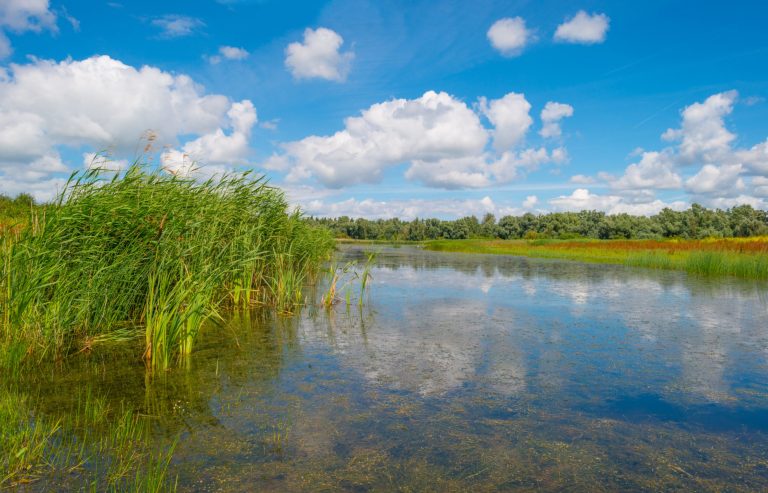Still Freshwater & Plants

Plants adapted on a still freshwater habitat
Plants in the freshwater community provide a means of food for herbivores and harness new energy into the community as a whole via photosynthesis from available sunlight. Plants are usually the pioneers of a new ecosystem, and therefore a bustling freshwater environment will have an abundance of plants.
The ecological niche alongside the still water banks is occupied by plants called hydroseres, which are partially, or totally submerged by water along the banks. Some of these hydroseres are rooted in the water, though some of their leaves penetrate the water surface, while others float on the surface, one side in contact with the water, the other side in contact with the open-air environment. In essence, hydroseres possess evolutionary adaptations and dithering respiration rates from land plants that have allowed them to adapt to live in such an environment. Such evolutionary adaptations in plants ha meant that their physical structure has changed to suit the environment, and therefore making freshwater plants distinctly unique in appearance.
An example of these adaptations is the lack of rigid structures in freshwater plants. This is due to the density of the water (much higher than that of an open-air environment), which ‘pushes’ against the plant in its daily life. This allows such plants to be more flexible against oncoming water tides and prevents damage to the plant.
As plants require a minimum concentration of gases in their diet such as carbon dioxide, they require a degree of buoyancy so that contact can be made with the open-air environment. Adaptations may include:
- Air Spaces – Air spaces in the plant will decrease density and increase buoyancy.
- Broad Leaves – Broader leaves will spread their weight more evenly across the water surface allowing them to float.
- Waxy Cuticle – On the upper half to allow water to run off the surface to prevent the weight of the water dragging the leaves under the surface.
As these plants are either partially or totally submerged in water, their transpiration rate is very different from that of land plants. Such adaptations allow the freshwater community plants to cope with these conditions and thrive. However, alterations to the transpiration rate of these plants have proved essential, as without these adaptations they would not be able to maintain their water balance. This is continued on the next tutorial, though related information can be found in the Plant Water Regulation in the Adaptation tutorial.
You will also like...

Animal Water Regulation
Animals adapt to their environment in aspects of anatomy, physiology, and behavior. This tutorial will help you understa..

Plant Water Regulation
Plants need to regulate water in order to stay upright and structurally stable. Find out the different evolutionary adap..

The Water Cycle
The water cycle (also referred to as the hydrological cycle) is a system of continuous transfer of water from the air, s..

Adaptation Tutorial
Adaptation, in biology and ecology, refers to the process or trait through which organisms or the populations in a habit..

Plant Biology
Plantlife can be studied at a variety of levels, from the molecular, genetic and biochemical level through organelles, c..

The Origins of Life
This tutorial digs into the past to investigate the origins of life. The section is split into geological periods in the..
